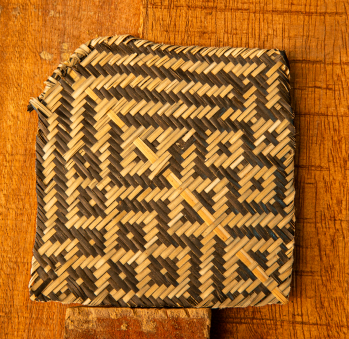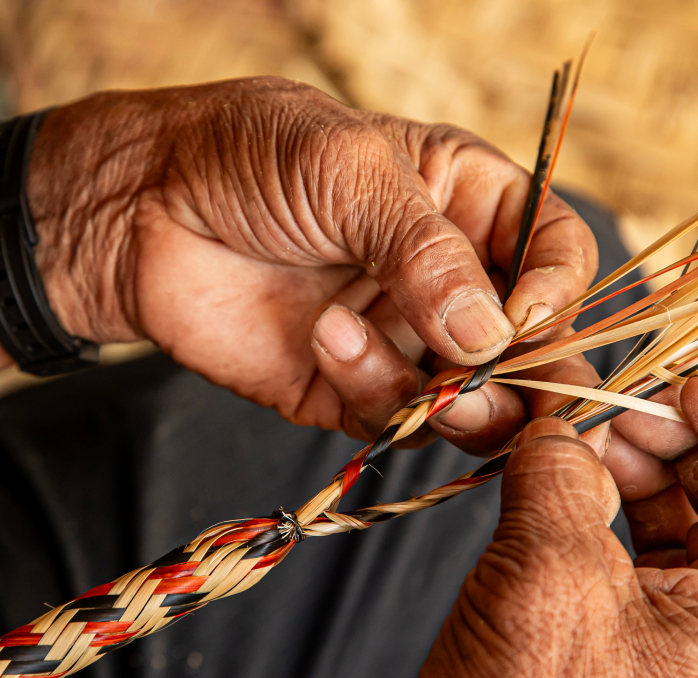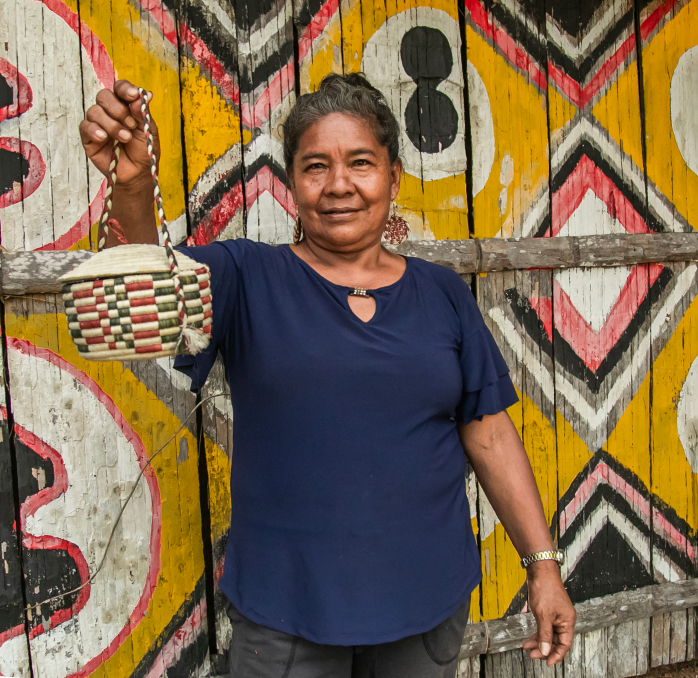Esteban Rodríguez
Workshop: Artesanías Noferinaipyaneque
Craft: Cestería y tejeduría
Trail: Guaviare Route
Location: El Retorno, Guaviare
SCHEDULE YOUR VISIT
Barrio Jardín, El Retorno, Guaviare
3184828386
3193318489
Fondo Mixto de Cultura de Guaviare (Alba Lucía Martínez): 3156779691
wilintonr164@gmail.com
Warumá is a mysterious plant that becomes scarcer with each passing day. Esteban Rodríguez searches for it downstream, among the stubble fields along the banks of Caño Grande, far from his home in the indigenous reservation of El Retorno. This herbaceous plant thrives in the Pacific coast, the Amazon basin, and the Orinoquía. Its stem yields fibers primarily used for weaving baskets. There are two varieties of warumá: one with green leaves that provides 8 to 10 fibers, and a thicker one with white leaves that yields between 12 and 16 fibers. On his fortunate days, Esteban manages to find enough plants to weave a basket, which requires a minimum of 64 fibers, equivalent to at least 6 stems. When he cannot find these plants, he takes a break from crafting baskets and works at a woodworking shop.
Legend has it that over three hundred years ago, Esteban’s ancestors, the Curripako people, were the only beholders of the craftsmanship gift. They were skilled in crafting clay raspers for grinding bitter cassava, and various types of warumá baskets, balay, and matafríos, used as cookware for processing cassava. They also created a peculiar device known as the atrapa mujeres, or women trap, a woven toy designed to ensnare the finger of anyone who inserted it. It resembles the matafríos, a long cylindrical woven basket where cassava is placed after grinding for its poison to be drained. The story behind the atrapa mujeres is as unusual as its purpose. Esteban recounts it as follows: Since the Curripako people possessed such extensive craftsmanship knowledge, envy grew among other groups, leading them to cast diseases upon the Curripako to steal their powers. One day, the Curripako people decided to confront their adversaries, sending four warriors to the enemy’s maloca, where they were having a party. Once they were all drunk, the soldiers took action and killed everyone, sparing only the young girls and women who were ensnared with the atrapa mujeres.
Just as his parents and grandparents did, Esteban learned the craft during his childhood. His family arrived in Vaupés when he was ten years old, amid the rubber boom, hailing from San Gabriel de Cachoeira in Brazil. According to Curripako culture, women must master clay craftsmanship, while men must excel in working with fibers. In this way, when they marry, they can jointly craft all the necessary cookware for preparing casabe and fariña from bitter cassava. Women fashion raspers, plates, jars, and pots using a special clay mixture kneaded with a large wooden pestle, while men weave matafríos, strainers, and fans from warumá and other fibers. Esteban learned by observing his elders and working alongside his friends. At the age of seven, their shared mission was to seek the coveted warumá in the scrublands and learn the art of weaving it.
Today, Esteban resides with his wife and youngest son in the indigenous reservation of El Retorno. They arrived in the year 2000, having left the Santa Cruz reservation, a ten-day journey on foot from their current home. As a family, they collaborate in crafting warumá baskets, seed necklaces, and totumo vessels. Their crafts are undeniably beautiful and gain even more significance when one considers the effort required to obtain a single stem of the elusive warumá plant.
Craft
























Artisans along the way
Artisans along the way
No puede copiar contenido de esta página


























































